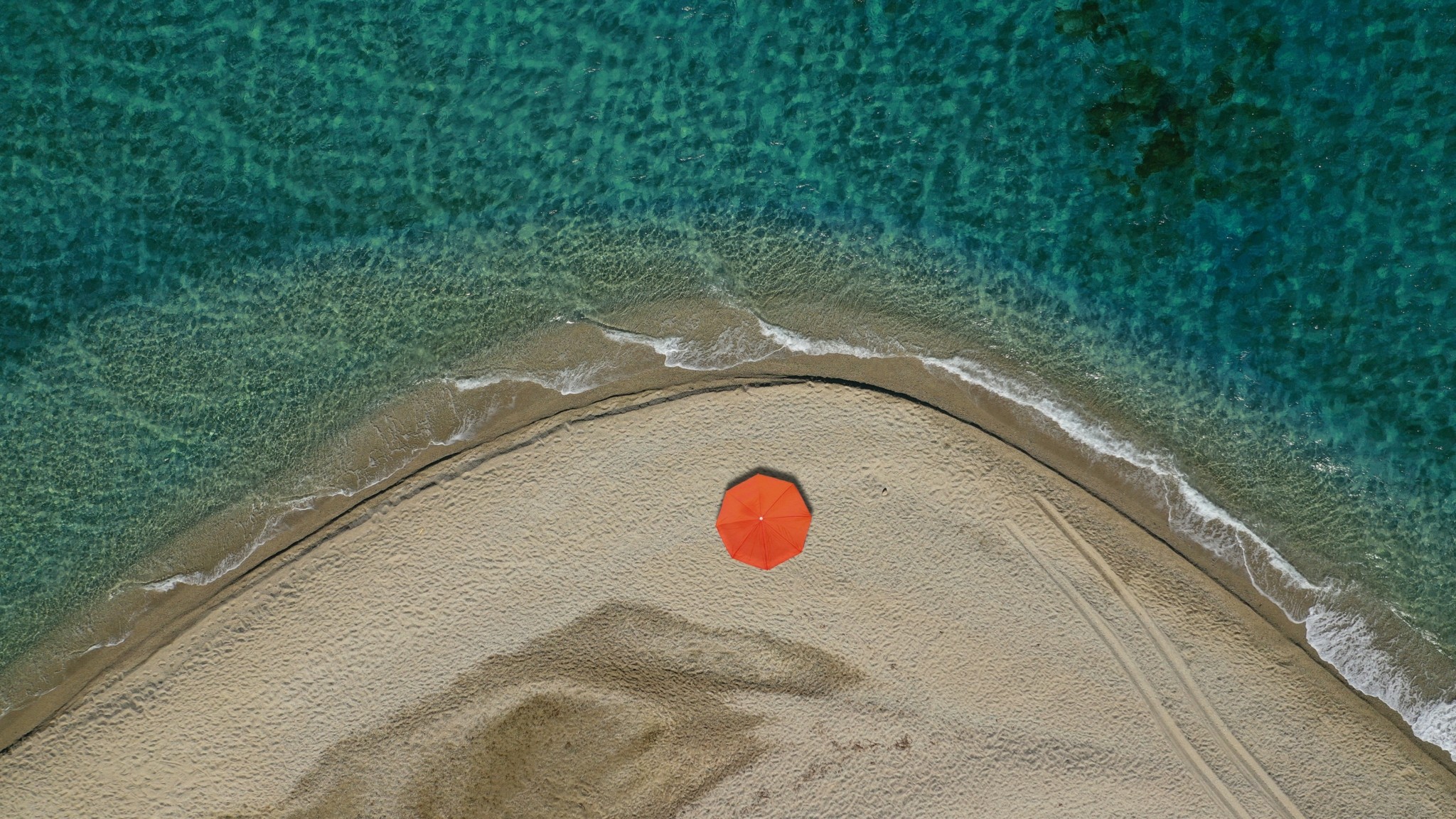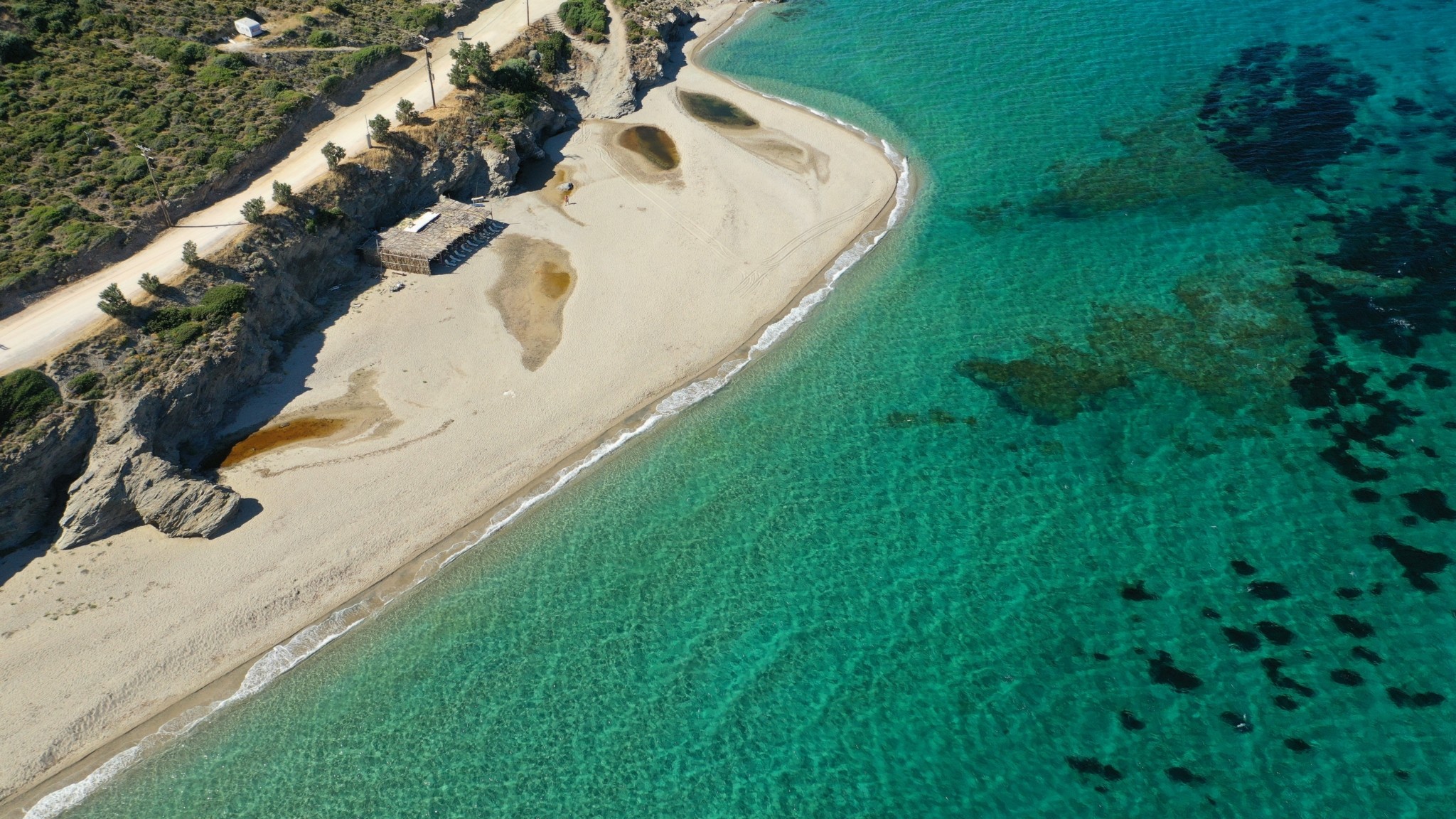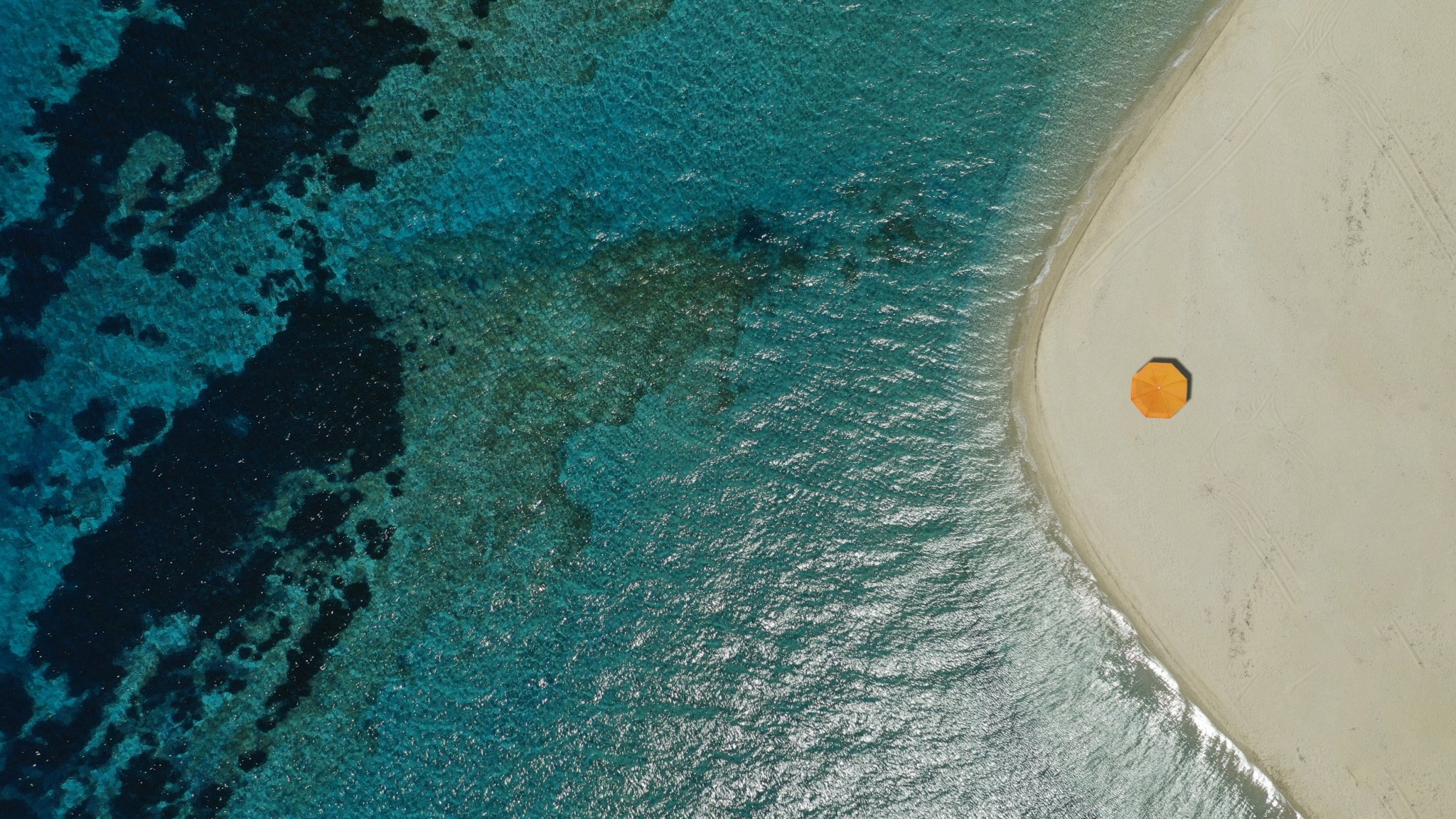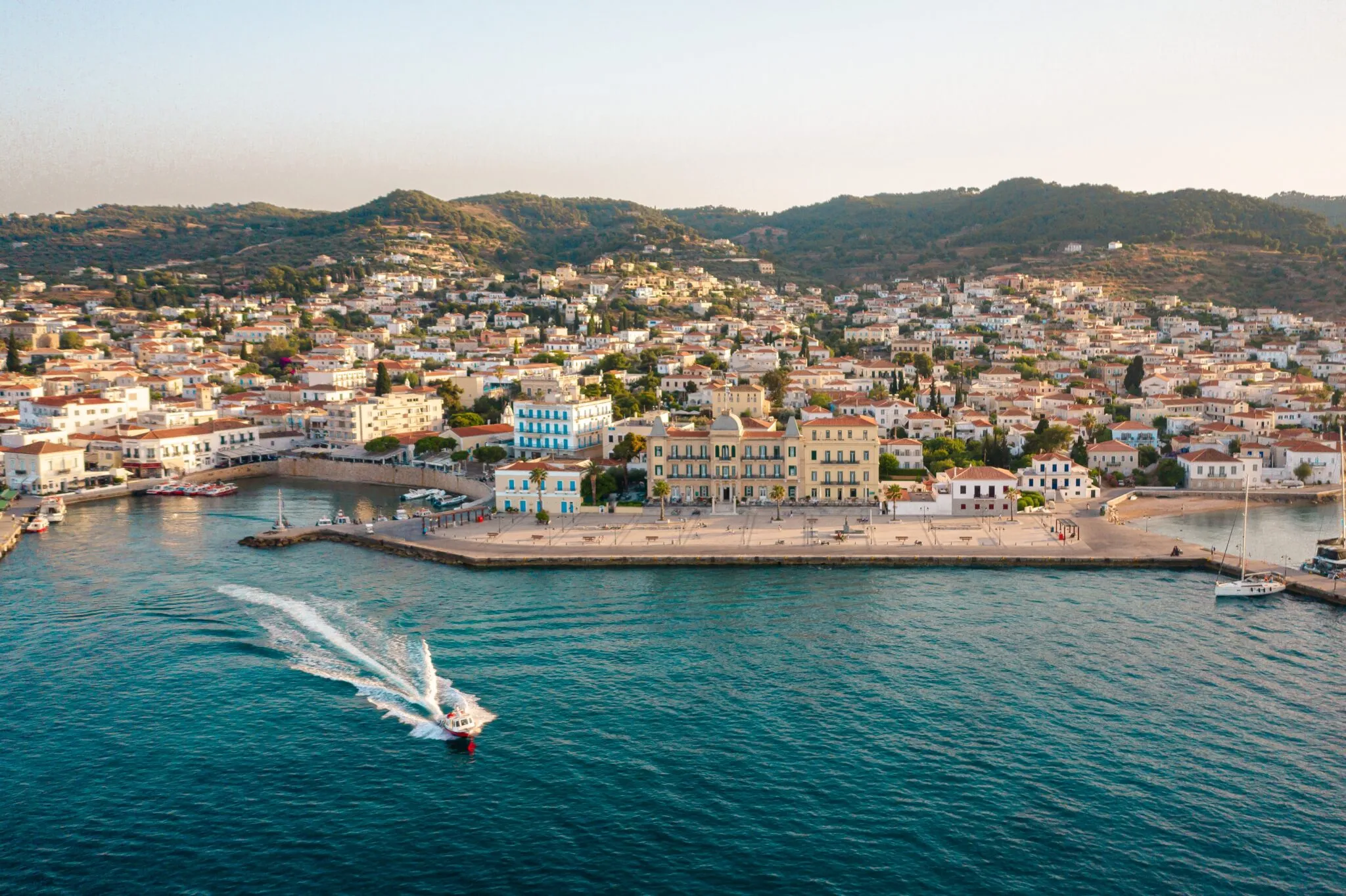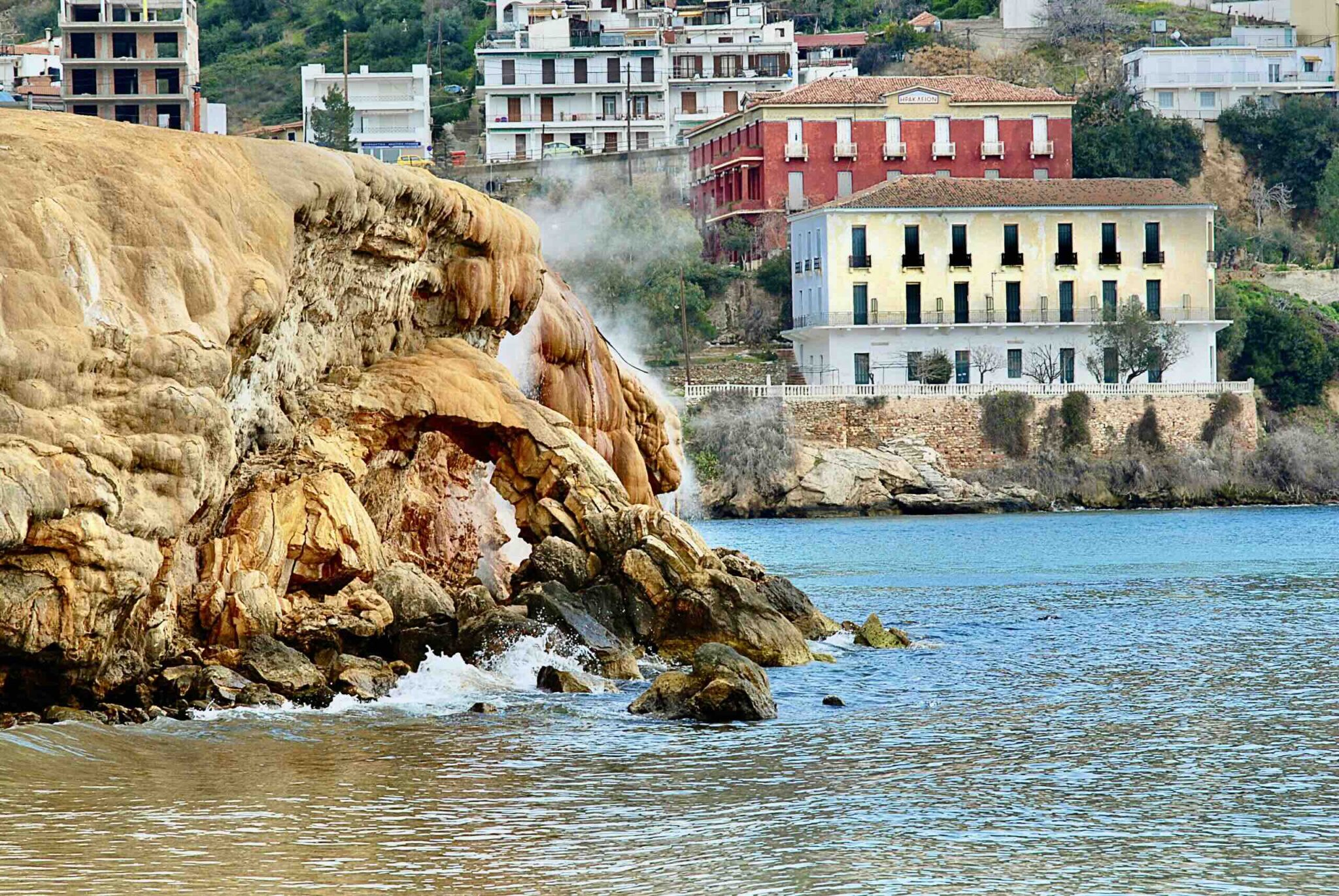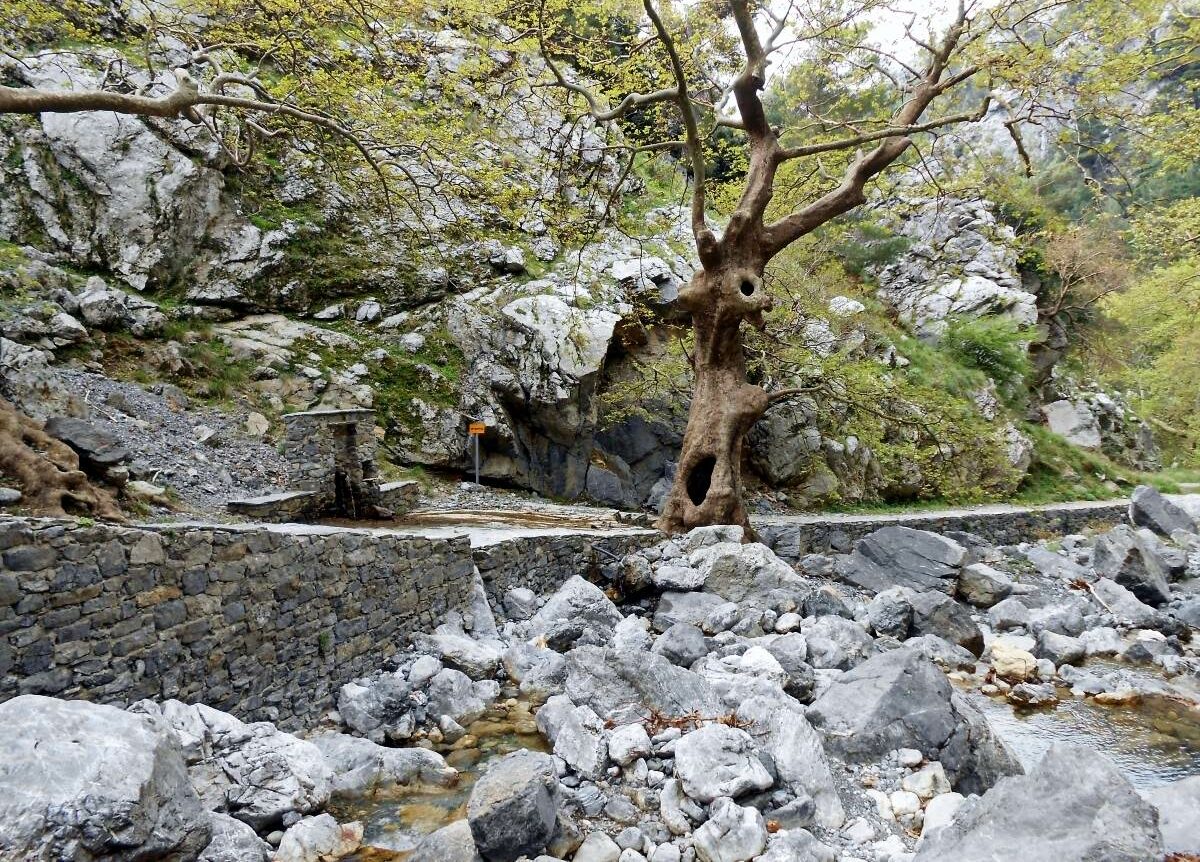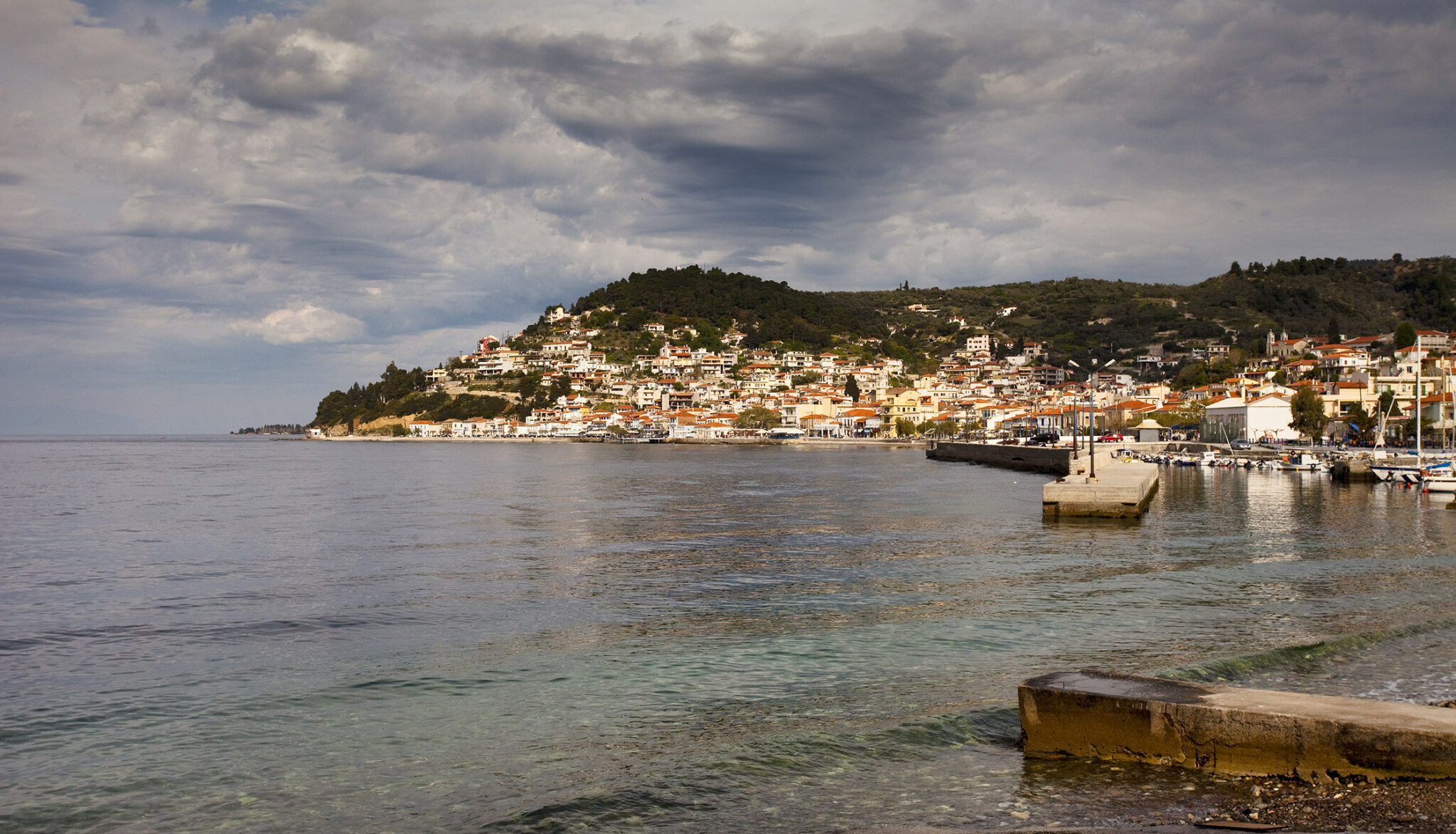“Greek summer is a state of mind” was the slogan of the 2020 Greek tourism campaign on a background of the photo of the distinctive sandy “finger” of Megali Ammos.
I immediately recognised it and not for one second did I think it was a beach in Croatia. Its name is Megali Ammos (ammos means sand in Greek and is in the name of many beaches, while megali means big) not Gold, nor Golden, nor Platia (which means wide) as I’ve seen it be called.
And I should know, since I know Megali Ammos beach since it was indeed big. A lot bigger than it is today.
Each year, in the beginning of June, as soon as school was over, the moment I arrived in Marmari, in Evia, where my grandparents, Maria and Manolis, lived and I were to spend the 3 months of my holiday, I went to see Megali Ammos, it was a ritual for me to see whether it was smaller. And each year it was. The waves would have eaten away at the sandy beach, and even changed its shape. Or maybe I was getting bigger and it grew smaller in my eyes.
Megali Ammos wasn’t a beach to go to every day in the windswept Marmari. It was a rare luxury. When the meltemi winds blew we didn’t even dare go near it. We had to wait for those few, rare days when the south wind blew, and the water was calm. “When the waves go towards Kokkini you can go to Megali Ammos” was the simplest advice that a fisherman grandpa could have given his then 10-year-old granddaughter who knew nothing about waves, winds and the weather. From then on, I knew.
So, when the south wind blew, we headed towards Megali Ammos. It was quite an adventure for us children, when our only vehicle was our bike. The road there wasn’t easy. It had rocks, was uphill, and, of course, the burning sun was above us. But none of that mattered. Neither did the total absence of shade on the beach. Because we knew that the “pooly” sea was reward enough for our troubles.
There were even legends about the waters – cool for us locals, cold for the people who were there for the first time or for foreigners. We were told that dogfish swam in the currents between Megali Ammos and Petalia right across (to be honest, they were probably just tope sharks), and probably it was to keep us children near the coast.
Since then, many things have changed. Megali Ammos has now become the favourite spot of all kinds of surfers. When the winds grow stronger, we see colourful kites going back and forth in the sky. And on those rare days of south winds, we drive there, with our umbrellas, our mini fridges – easy! – and we climb down the steps – yes, they’ve built steps now, so even the chances of tumbling from the road to the beach have diminished.
The little secrets of Megali Ammos beach
– The windless days on this beach are very few in the summer. Your best chance is in June or in September. During August, with the meltemi winds (etesian winds) you’ll be lucky to get 2-3 windless days. But if you do get them, seize the opportunity, and go for a swim.
– If you’re fans of surfing, this is your heaven on Earth. The currents and the endless winds are the normal in the area.
– Whether the wind is south or north, the waters are always cold and clear.
– Right behind Megali Ammos, slightly harder to access, is a small and usually calm beach, Zastani. It’s worth a visit.



